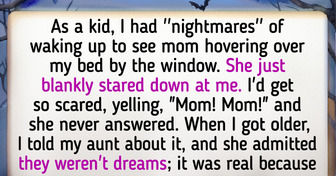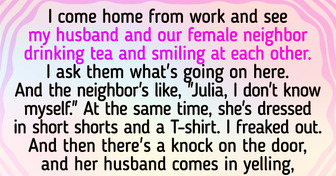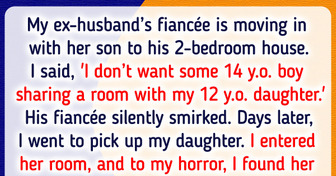I Refuse to Help My Mom Since I Learned She Excluded Me From Her Will

This little ant may seem lost, but it’s actually scavenging around for food. It’s drifted away from its colony and is smelling something yummy close by. Ants have weak eyesight. That’s why they have to rely on pheromones to communicate with one another.
These pheromones are the secret behind ants’ coordination. They’re chemical clues that ants drop along their path so that others know where to go and even what to do. When ants walk around, they tap their abdomens on different surfaces to leave marks. These insects can release 20 different signals for different purposes.
This adds to their complex communication system. Some of the pheromones are a call for getting rid of a threat. Some invite other ants over for food. There are pheromones that insects use when asking for help.
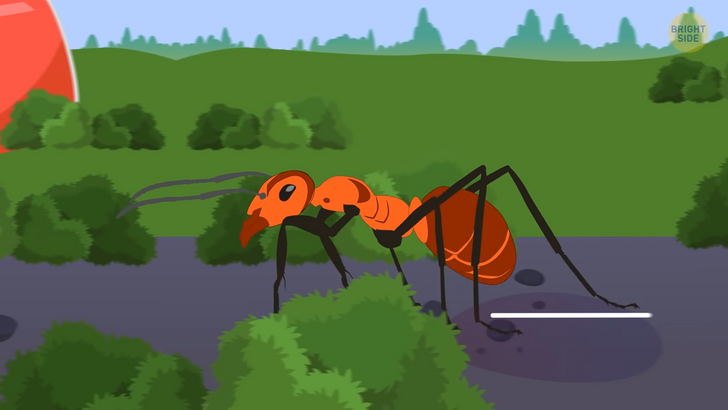
The little ant you spotted earlier climbs over some stems and gravel. Suddenly, it finds a large piece of a leftover sandwich that was tossed away. After spotting such treasure, the ant quickly turns back and touches the ground with its abdomen. Soon, other scavengers and worker ants appear.
The scavenger ants communicate with one another by touching their antennae. It continues until the necessary information reaches the nest. Many scavenger ants stop what they’ve been doing and follow the trail to the sandwich. They observe the goliath piece of food that came out of nowhere and begin grabbing some crumbs.
Several bigger soldier ants, whose main purpose is fighting and defending the nest, patrol the nearby area. This way, other insects can’t snatch their prize. They set off on a perilous journey back home — they have a colony to feed. With the queen laying up to 15,000 eggs in a single day, they need all the food they can get.
The queen ant can lay millions of eggs in her lifetime. She’s the largest ant in the whole colony and the only one that can give birth to new ants. The queen can live for years. Such ants get born when their mother lays special eggs.
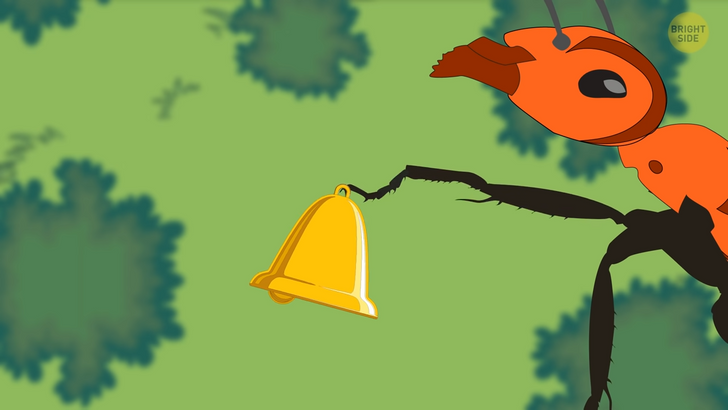
They’re unlike regular eggs that end up as either worker or soldier ants. These special eggs are laid when a colony hits a certain size. The ants that are born out of these eggs are larger than the average insects and have wings. These ants are either young queens or male ants that can take part in the process of reproduction. The potential queen ants then have to venture out into the dangerous outside world. They need to find a new place to start a nest and then colony. Only 1 out of 500 queens actually makes it.
The eggs the queen lays are divided into two categories: worker non-reproducing ants and royal reproducing ants. An ant isn’t born big or small. That depends on what they’re fed when they’re young. If they end up big, they join the ranks and become soldier ants. If they grow up to be average size, they become workers or scavengers. And if they’re tiny, then their job would be to babysit the larvae and keep the nest nice and tidy. But in the end, any ant’s job is to serve the queen and her alone.
The ants cover the whole sandwich, pick up the crumbs, and carry them one by one to the nest. Ants can carry 10 to 50 times their own weight and size. This makes them one of the strongest creatures on Earth relative to their size. Some ants are carrying bigger pieces, like scraps of lettuce and cheese. They even drag a large piece of bread, which requires the collective work of dozens of ants.
Some soldier ants patrol the area to make sure their mates are safe. The ants drag and carry the pieces. They climb many hills and go down numerous slopes until they almost reach the anthill. The ants in the nest have already prepared for the food arrival. They’ve cleared out as much space as they could.
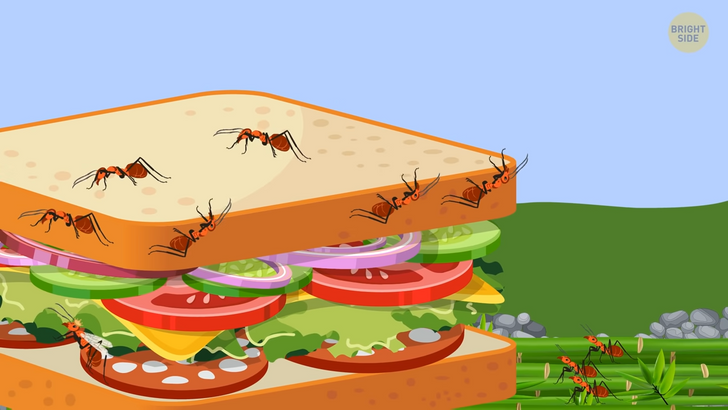
A large shadow hovers above the “delivery” ants. They continue their way to the colony’s entrance, but the shadow gets bigger. It’s a large wasp, and it wants its share of the sandwich. The scavenger ants are alarmed and release the pheromones of warning. The soldier ants pick up this scent.
They group together to create a protective wall around the scavenger ants so that they can get to safety. The wasp hovers above them but can’t do anything. Reinforcements arrive and protect the ants heading for the anthill. The entire colony is alert and in defensive mode.
But more wasps start flying around, trying to grab the piece of the sandwich. Luckily, the soldier ants are well organized and make sure not to break their defense. The wall they form keeps getting thicker and thicker until the wasps just fly away. The ants celebrate and take most of the sandwich down to the colony. The tunnels they move through can go as deep as 6 feet underground.
That’s a distance greater than the height of most humans. Worker ants’ job is to dig the tunnels and secure the nest. The queen lays eggs all over the nest while nurse ants carry larvae. These larvae need certain temperatures to survive. The nurse ants bring the larvae close to the top of the mound, where the temperature during the day is just fine.
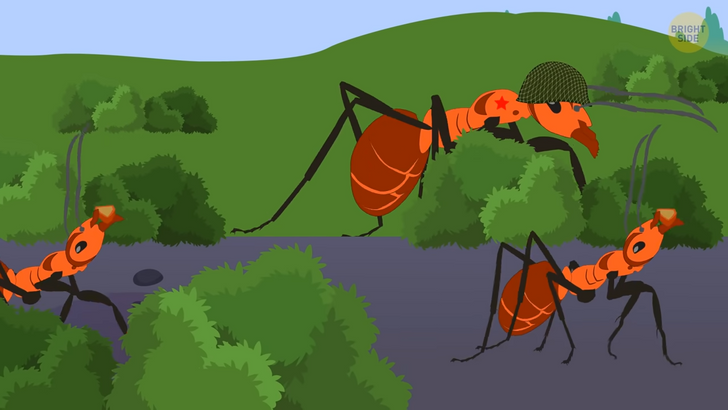
But if it gets too hot, the larvae get moved down the tunnels into other, cooler chambers. Up and down, up and down — that’s how the cycle goes. Everything to get the right temperature until the larvae grow into mature ants ready to serve the queen. There are many “highways” going through the nest.
They link major areas. There are also little tunnels that lead to small chambers where ants can rest, sleep, and eat. Just below the surface, another system of tunnels is built.
Since going up to the surface through the main entrance might be unsafe, such tunnels are designed to deliver food inside the anthill. The only downside of this system is that other dangerous creatures can also sneak into these tunnels and ambush ants in their own home.
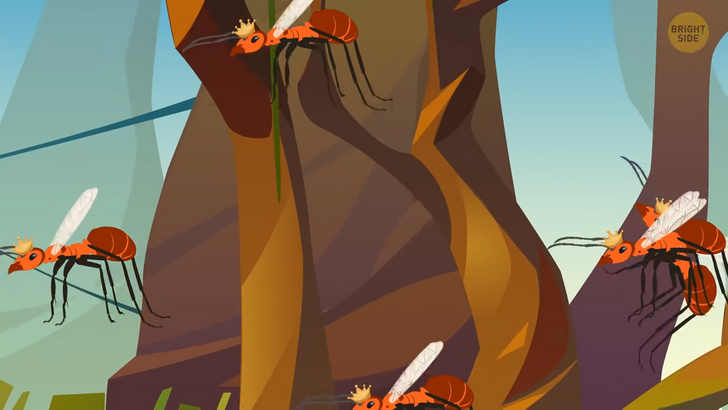
The ants come back to the nest with their trophy. They’re getting ready for a feast. But since these insects are also extremely neat creatures, they always make sure that everything they bring home doesn’t cause a mess. Anyway, the food gets distributed between hundreds of thousands of ants. They move most of the sandwich down the tunnels in a matter of hours.
There are no breaks, just work. But suddenly, they feel the ground rumbling. Many workers and scavenger ants rush down the tunnels in panic. It starts raining outside! Ants are extremely fast in handling emergency situations.
They quickly head to the main entrance of the anthill and clog the hole with dirt. This way, no water can seep into their home. But it can’t stop the rain from getting inside. Anthills have many entrances and escape routes — just in case. There isn’t enough time to block these holes too.

Ants start running toward the surface, trying to avoid the flood. Many little chambers get filled with water. But nurse ants manage to reach the surface. Even though the rain is still raging, the insects make it to a safe place to wait there until the rain stops.
The anthill is completely flooded. It means ants have to find another location and build a new colony. They begin their search for new territories. They come across other anthills and have to avoid them to survive. In the beginning, they were around 250,000.
Now, they’re only half of that number. After hours of traveling, they find some land that seems to be safe enough to settle down. The queen has never stopped laying eggs. That’s why, with their incredible organizational skills, the ants can actually build a nest in a matter of days.

If the queen ant disappears, ants simply stop working and leave the colony. Since these insects are very loyal and non-individualistic creatures, they don’t have a life purpose anymore. And most of them don’t make it out there for more than a week on their own.
The first insects appeared around 400 million years ago. As for ants, they saw the light of day around 100 million years ago. They walked side by side with dinosaurs. They weren’t the most dominant insect during that time.
Giant dragonflies, cockroaches, and termites were actually big fish in the insect world. But 60 million years ago, ants claimed the title of the dominant insect. There were more than 12,000 species living all over the world except Antarctica.



